Record-Breaking Supersonic Skydive from 'Near-Space' in Photos
On Oct. 24, 2014, skydiver Alan Eustace set a new record for the highest near-space jump from the stratosphere as part of a feat performed with the Stratospheric Explorer (StratEx) team and the Paragon Space Development Corporation. Read our full story: Skydiver Goes Supersonic in Record-Breaking 'Near-Space Dive' . Eustace fell from an altitude of 135,908 feet (41,425 meters) and wore a custom pressurized spacesuit built by ILC Dover (NASA's spacesuit provider) and parachute to survive the supersonic descent. See the video above and more photos of the epic leap skydive:
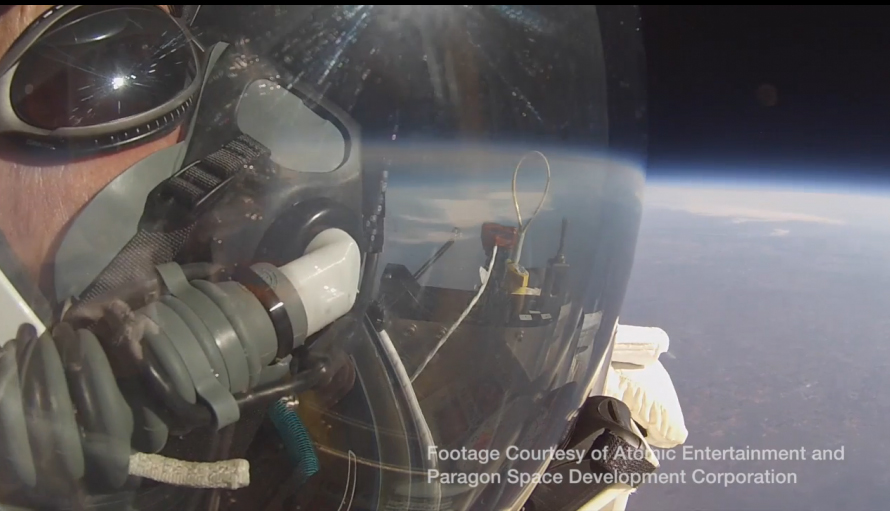
A veteran skydiver and pilot, Alan Eustace set a new U.S. record for the highest skydive, a new world record for the longest freefall under a drogue chute, and the U.S. record for the fastest vertical speed during the StratEx jump on Oct. 24 over Roswell, New Mexico. This still image (from a Paragon video) shows the view from his helmet during the stratospheric leap. The dive began from a higher altitude than the previous record set by daredevil Felix Baumgarter, who leapt from a height of 128,000 feet on Oct. 14, 2012 during the Red Bull Stratos mission. Eustace is the second skydiver ever to break the sound barrier after Baumgartner. Credit: Paragon.
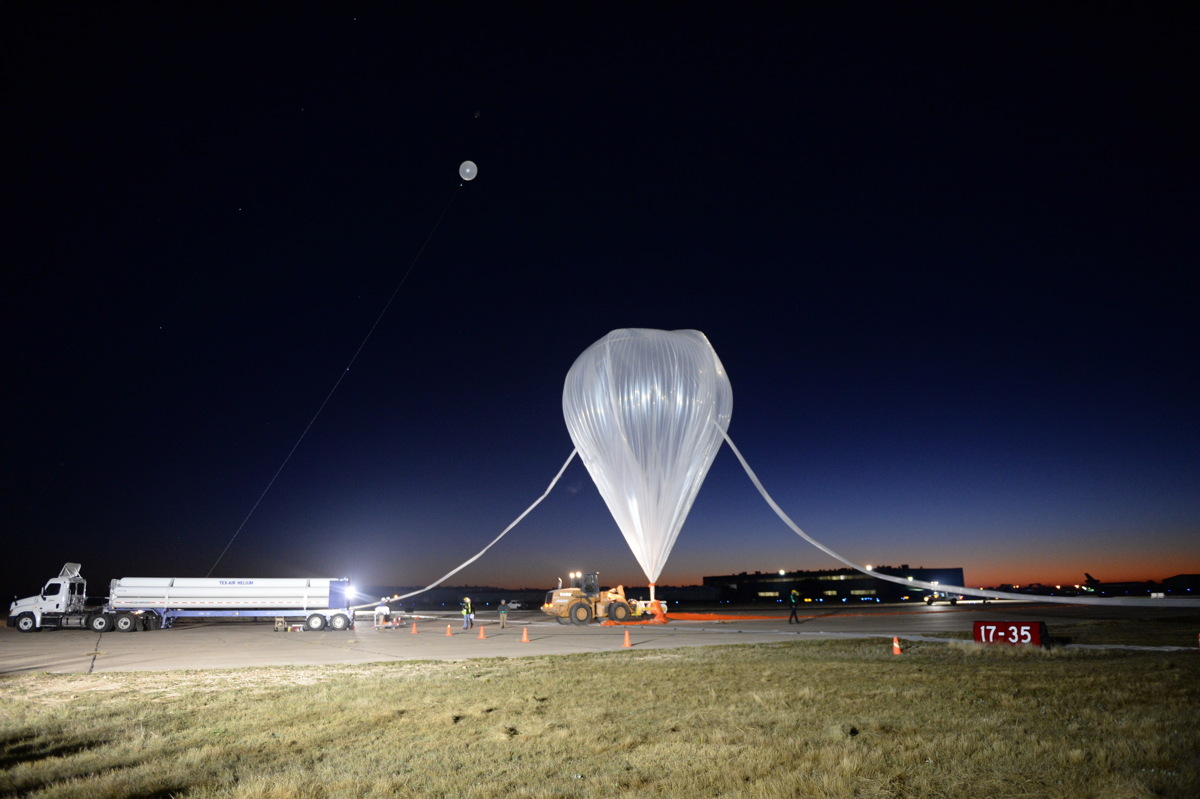
The Paragon StratEx team used a giant high-altitude balloon to lift Eustace to his dive altitude. Here, the balloon is filled with helium ahead of the record-breaking jump. Credit: Paragon.
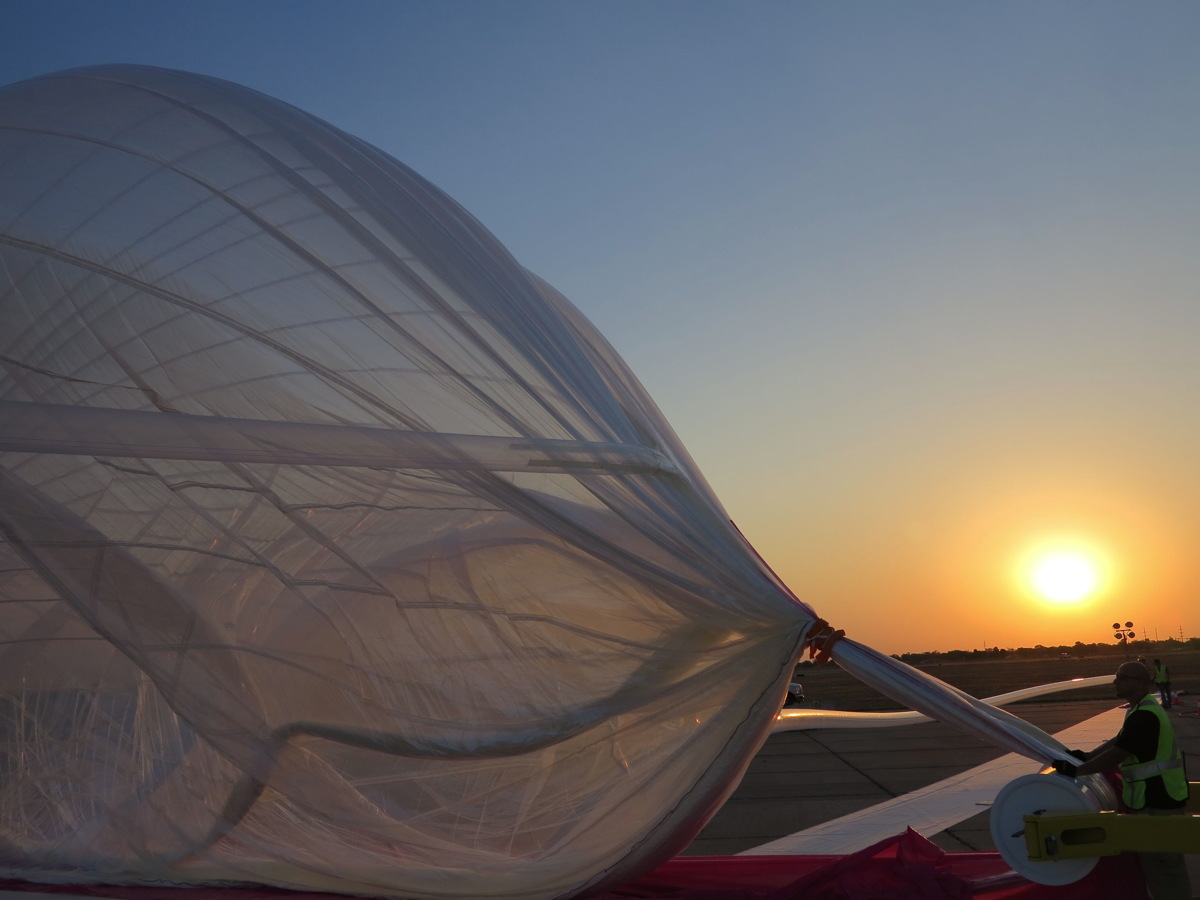
The sun rises over Roswell, New Mexico as Paragon and StratEx teams prepare to launch Eustace on his daring trip into Earth's stratosphere. Credit: Paragon
Get the Space.com Newsletter
Breaking space news, the latest updates on rocket launches, skywatching events and more!
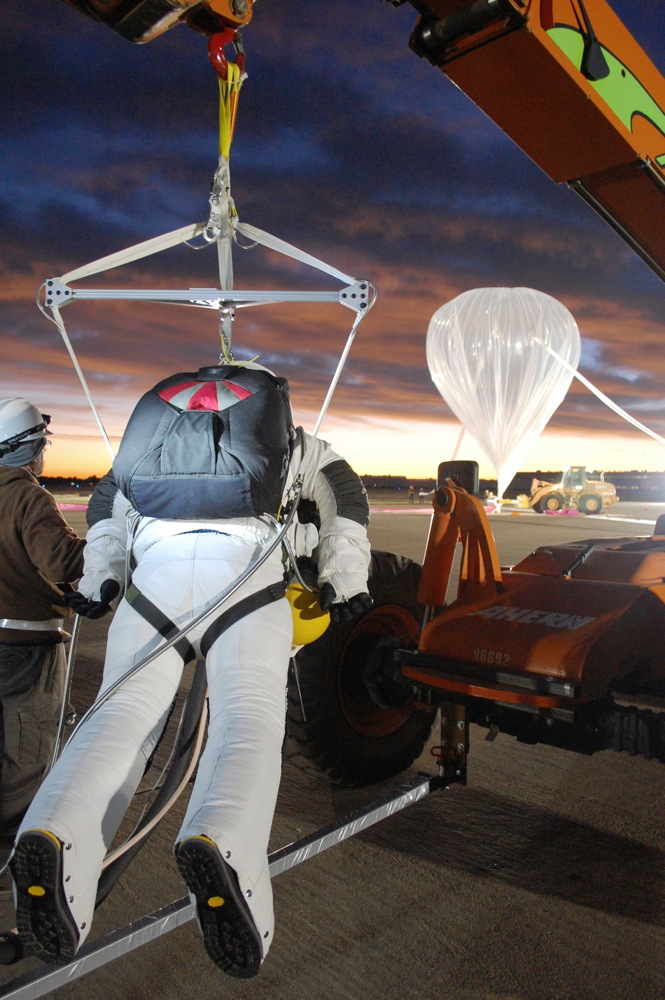
Alan Eustance wore a custom-built pressurized spacesuit built by the Paragon StratEx team using expertise from ILC Dover, the same company that built the Extravehicular Mobility Unit spacesuits for NASA that are used on the International Space Station today. "A StratEx team goal was to develop a self-contained spacesuit system that allows for manned exploration of the stratosphere above 100,000 feet. Such a system has a wide range of applications in stratospheric science, development of spaceship crew egress and the study of suited aerodynamics above Mach 1," Paragon representatives wrote in a statement announcing the feat. Credit: Paragon.
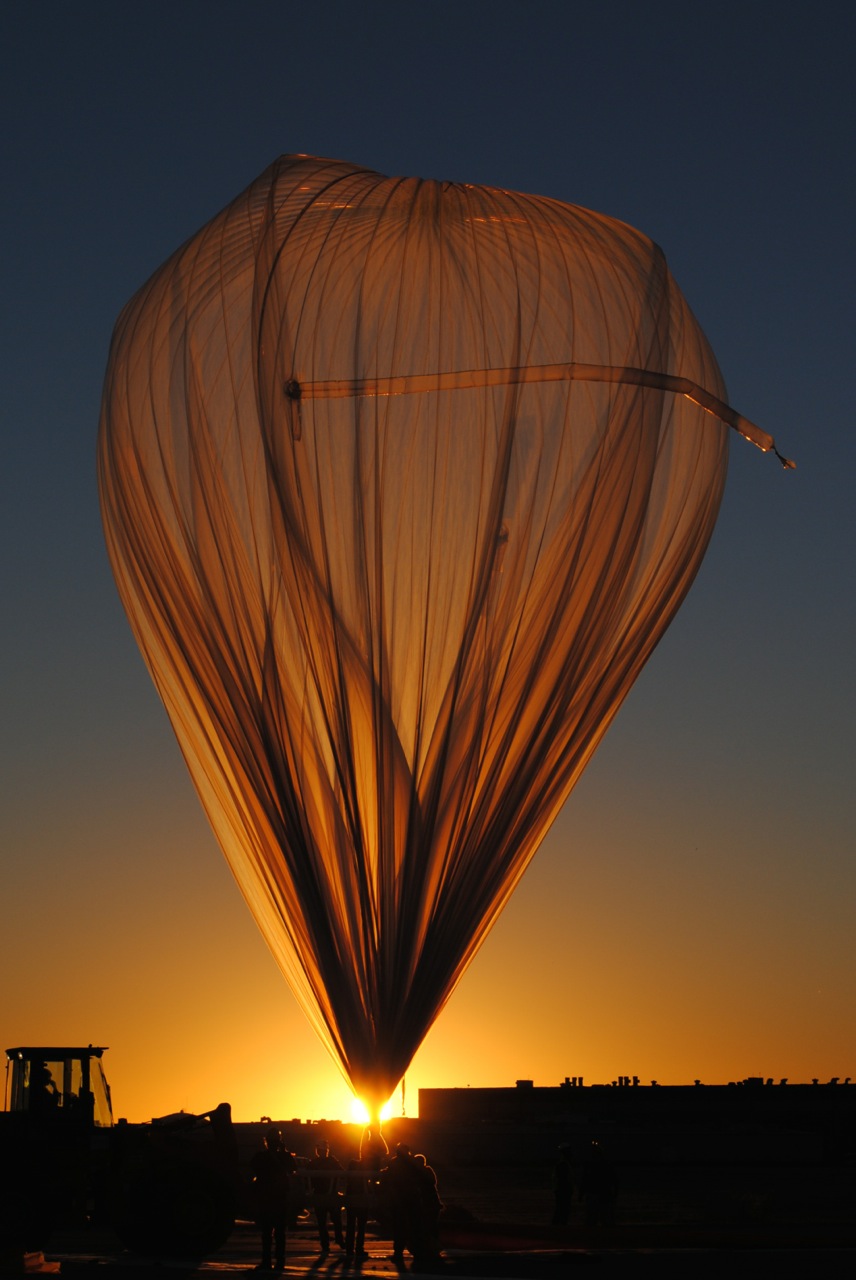
A stunning view of the helium-filled balloon used by Paragon StratEx to launch Alan Eustace toward the stratosphere from Roswell, New Mexico. One partner on the project, DayWeather, Inc., specializes in making weather forecasts for high-altitude balloon missions. Credit: Paragon.
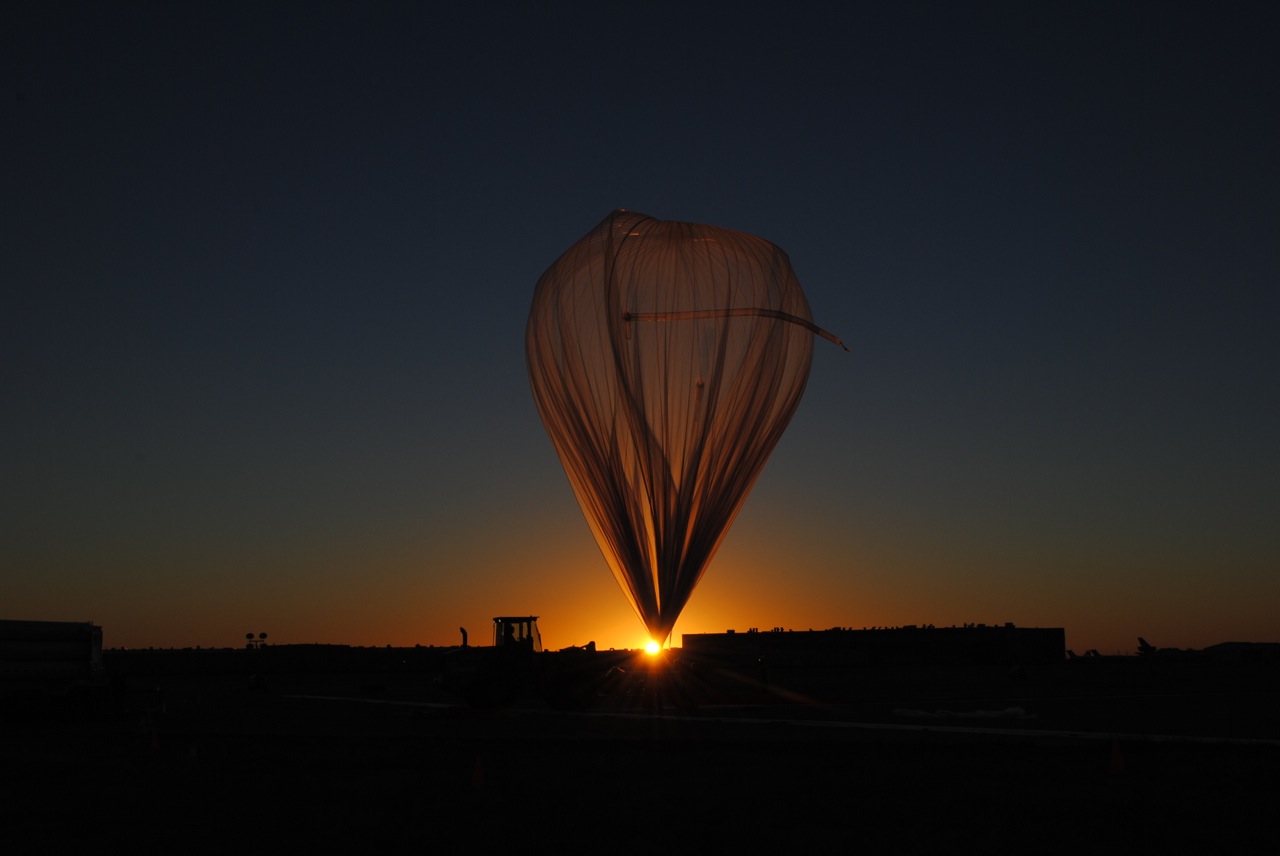
Another stunning sunrise view of the Paragon StratEx balloon used for skydiver Alan Eustace's record-breaking dive from the stratosphere. Paragon StratEx partnered with World View Enterprises, a commercial balloon spaceflight company, while developing the "near-space dive" project. Credit: Paragon.
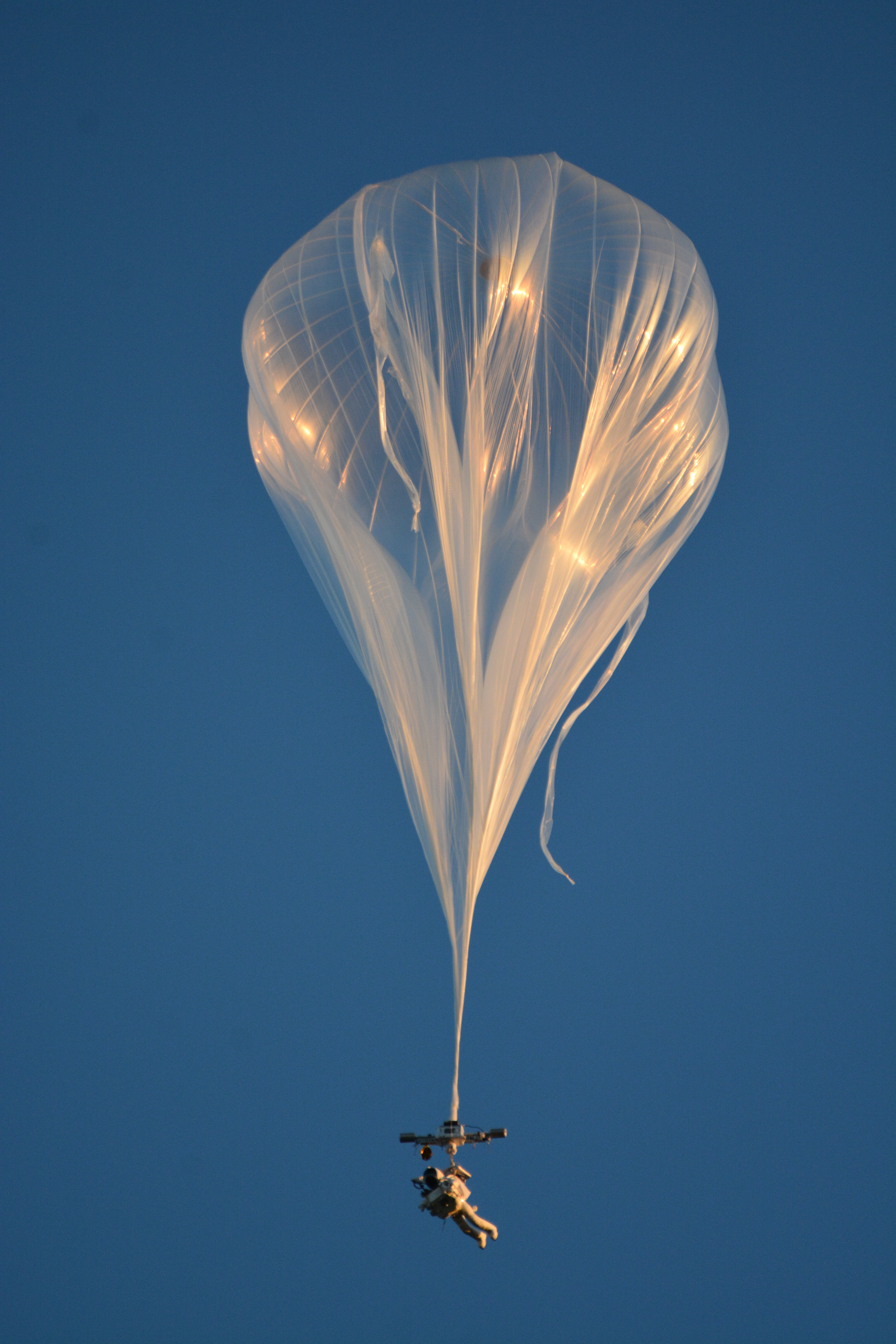
Daredevil skydiver Alan Eustace begins his trip up to the Earth's stratosphere while hanging from the bottom of a high-altitude balloon. Eustace's pressurized spacesuit was attached to the balloon at the back, forcing him to hang from the balloon, facing down. Credit: Paragon.
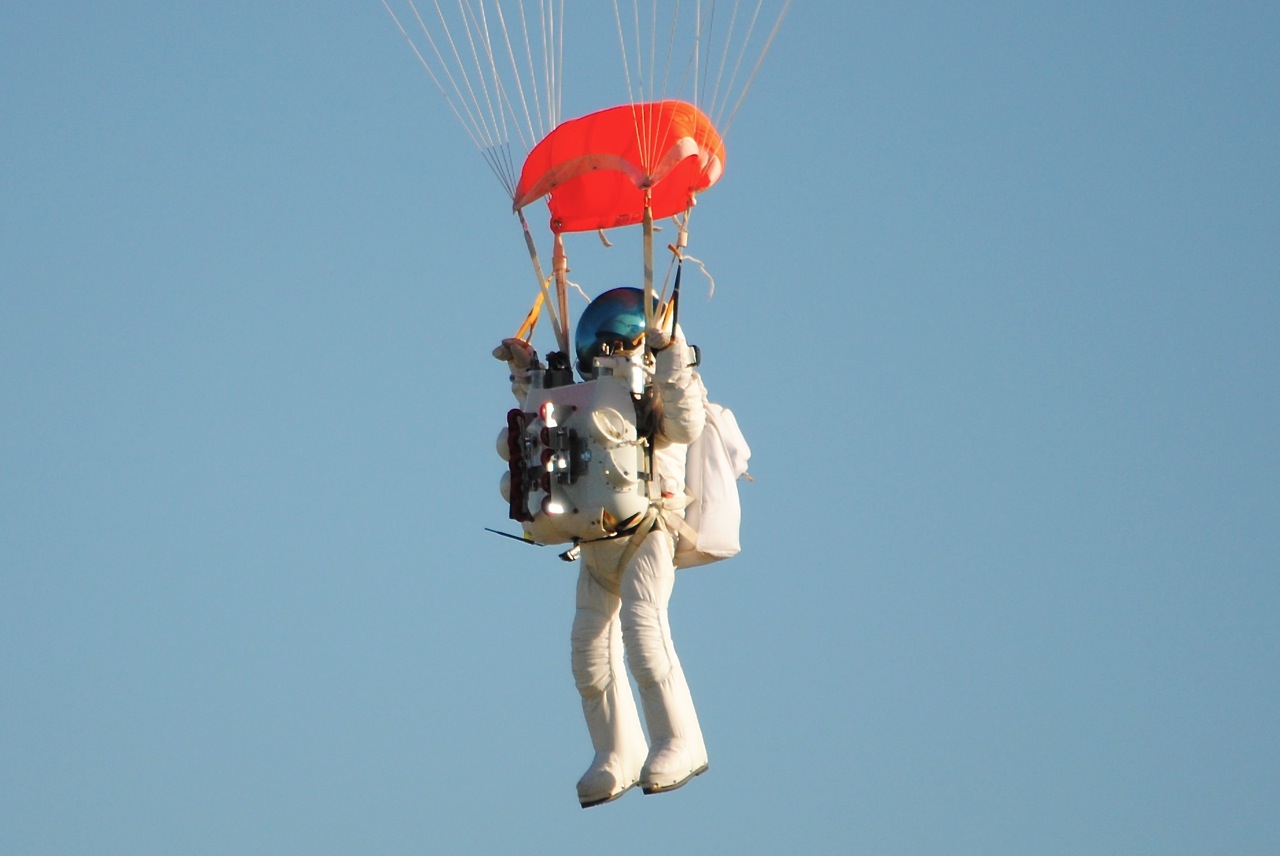
After reaching his peak altitude of 135,908 feet (41,425 meters), Eustace detached from his carrier balloon and spent a mind-boggling 4.5 minutes in freefall during the descent back to Earth. Here, he can be seen descending under his parachute ahead of a safe landing in New Mexico. Credit: Paragon.
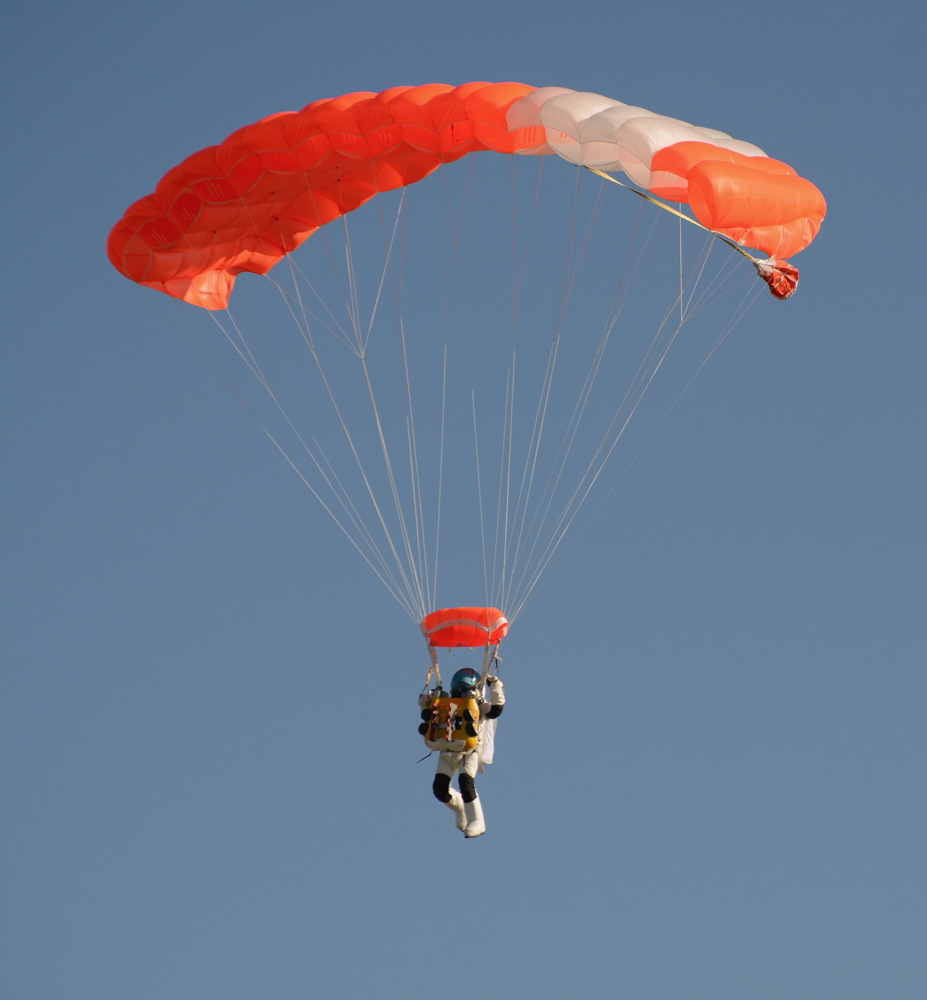
Eustace actually went supersonic during his plunge back to Earth and set a world record for the free fall under a drogue chute. While he lifted off from the airport in Roswell, he actually returned to Earth about 70 miles away from the launch point. Credit: Paragon.
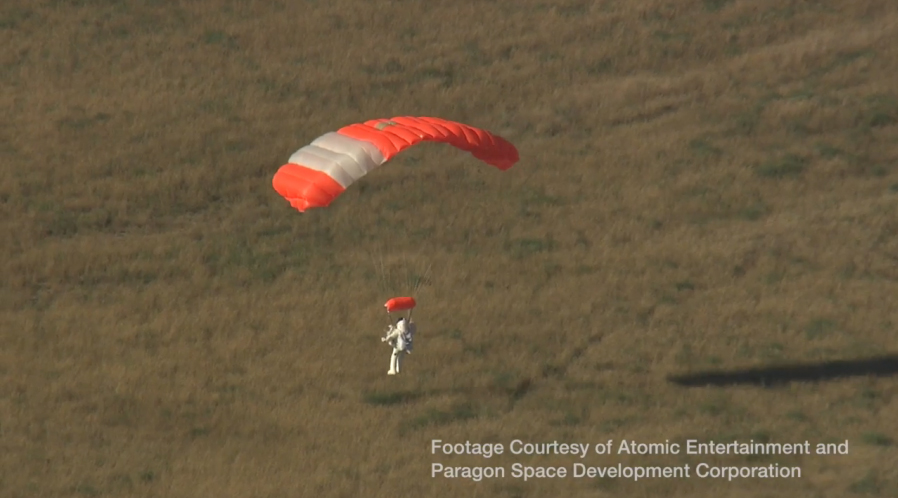
Here, Eustace is seen just as he is about to land in a field following an epic supersonic jump. Just seconds after this screenshot was captured, Eustace appeared to take a tumble as he landed, but appeared okay in photos released by Paragon after the jump. Credit: Paragon.
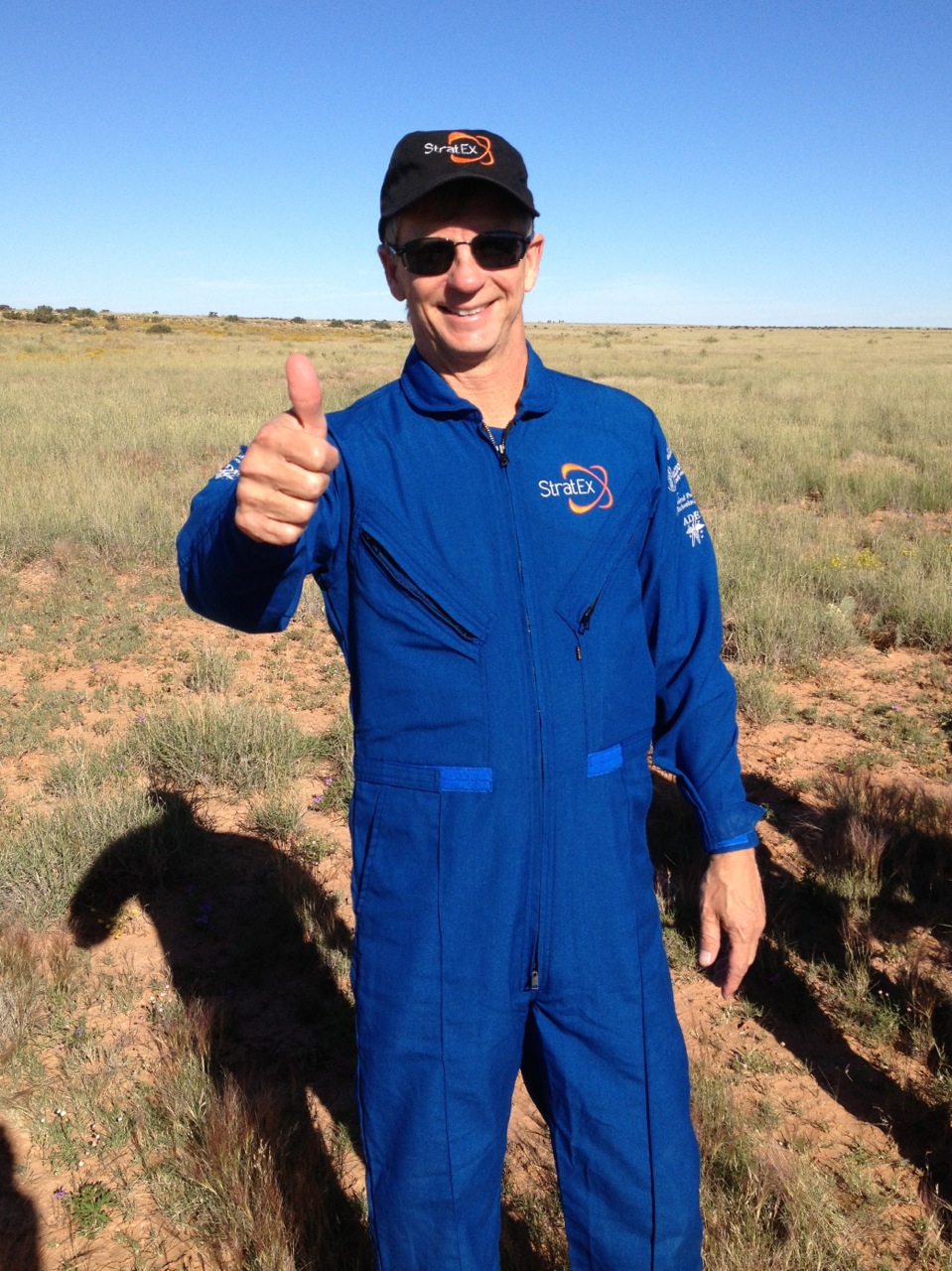
A jubilant Alan Eustace gives a thumb's up sign after a successful, and record-shattering, skydive from the Earth's stratosphere. The project was performed by the Paragon StratEx team to test spacesuit technologies for several applications, including exploration of the Earth's stratosphere, supersonic research and spacecraft emergency escape studies. Credit: Paragon.
Follow us @Spacedotcom, Facebook and Google+.
Join our Space Forums to keep talking space on the latest missions, night sky and more! And if you have a news tip, correction or comment, let us know at: community@space.com.

Tariq is the Editor-in-Chief of Space.com and joined the team in 2001, first as an intern and staff writer, and later as an editor. He covers human spaceflight, exploration and space science, as well as skywatching and entertainment. He became Space.com's Managing Editor in 2009 and Editor-in-Chief in 2019. Before joining Space.com, Tariq was a staff reporter for The Los Angeles Times covering education and city beats in La Habra, Fullerton and Huntington Beach. In October 2022, Tariq received the Harry Kolcum Award for excellence in space reporting from the National Space Club Florida Committee. He is also an Eagle Scout (yes, he has the Space Exploration merit badge) and went to Space Camp four times as a kid and a fifth time as an adult. He has journalism degrees from the University of Southern California and New York University. You can find Tariq at Space.com and as the co-host to the This Week In Space podcast with space historian Rod Pyle on the TWiT network. To see his latest project, you can follow Tariq on Twitter @tariqjmalik.









